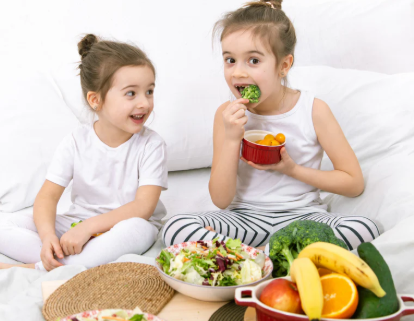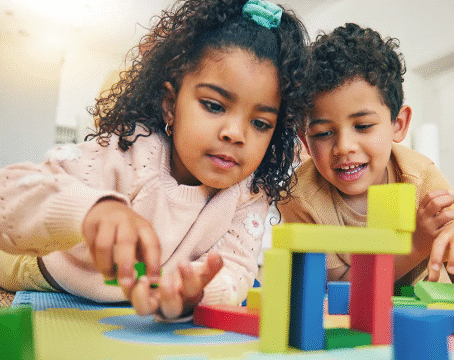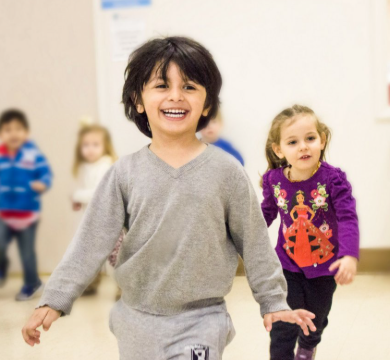Breakfast has long been called the most important meal of the day, and for children, this couldn’t be more true. A balanced breakfast provides the energy they need to start the day strong, focus on learning, and stay active. Beyond nutrition, breakfast is also an opportunity to teach children valuable lessons about making healthy choices. With the right approach, mornings can become not just a time to eat but also a time to learn, connect, and develop lifelong habits.
Teaching kids about healthy breakfasts starts with the simple idea that food is fuel for the body. Children are naturally curious, and they enjoy discovering how things work. Parents and caregivers can explain in simple terms that just like cars need gas to run, our bodies need food to move, think, and play. When kids understand that breakfast helps them feel alert and ready for the day, they become more motivated to enjoy it.
One way to make this lesson fun is to involve children in the breakfast-making process. Allowing them to help prepare meals encourages curiosity about ingredients and helps them learn where their food comes from. For younger children, this might mean stirring, spreading, or choosing fruit to add to cereal or yogurt. Older children can learn simple cooking skills such as scrambling eggs or making smoothies. When kids take part in preparing their meals, they feel proud of their creations and more likely to eat what they make.
It is also important to teach children about balance. A healthy breakfast is not about one single food but about combining different types of nutrients. For instance, proteins like eggs, yogurt, or nut butters help children feel full and give them lasting energy. Whole grains such as oatmeal or whole-grain bread provide steady fuel, while fruits add natural sweetness and important vitamins. Parents can explain how each type of food plays a role in helping their bodies and minds work well. This not only helps children understand what they are eating but also makes healthy choices feel exciting rather than restrictive.
Children often enjoy learning through stories and imagination, so parents can get creative when teaching about breakfast. For example, they might describe fruit as a superhero that gives the body strength, or whole grains as a steady train carrying energy through the morning. These playful explanations stick in children’s minds and make healthy foods more appealing. By presenting breakfast as something fun and full of color, children begin to see it as a positive experience rather than just another routine.
Parents can also set the tone by being role models. Children notice what adults do, often more than what they say. When they see parents sitting down to a balanced breakfast, enjoying it, and making time for it each morning, they learn that this habit is both important and enjoyable. Families can make breakfast a shared time instead of a rushed one, even if it is just ten minutes together. These small rituals create warm memories and help children associate breakfast with comfort and care.
Another way to encourage healthy breakfast habits is by offering variety. Eating the same foods every day can make children lose interest, but a rotating selection keeps things exciting. One day might feature yogurt with fruit, another could include oatmeal with cinnamon, and another might have whole-grain toast with a spread of avocado or nut butter. Even simple changes, like swapping the type of fruit or adding a new topping, can make breakfast feel fresh and interesting. When children see that healthy breakfasts come in many forms, they learn that nutritious food does not have to be boring.
Parents can also use breakfast as an opportunity to teach about mindful eating. Instead of rushing through the meal, families can slow down and talk about the taste, texture, and colors of the food. Asking children what they notice about their meal helps them pay attention to what they are eating and enjoy it more fully. This practice encourages an appreciation for food and helps children recognize when they feel full. Mindful eating skills learned at breakfast can carry into the rest of the day and promote healthier habits overall.
In addition to teaching about food, breakfast can be a time to share values around gratitude and togetherness. Families might start the day by expressing thanks for the meal or sharing something they are looking forward to. This adds a layer of meaning to breakfast that goes beyond nutrition. It reminds children that eating together is not just about fueling the body but also about nourishing relationships.
Of course, mornings can sometimes be busy and challenging. It may not always be possible to prepare elaborate breakfasts, but even simple meals can be both nutritious and satisfying. Parents can show children that healthy eating is about making the best choices with what is available. A piece of fruit with toast or a quick smoothie can still be a valuable start to the day. Teaching flexibility helps children understand that health is about balance rather than perfection.
Over time, children who grow up with positive breakfast habits are more likely to continue them into adulthood. They learn to start their day with care for themselves, which sets a foundation for making thoughtful choices throughout the day. More importantly, they carry with them the memory of mornings spent with their families, sharing food and connection.
Teaching kids about healthy breakfasts is not only about nutrition; it is about building a lifelong relationship with food that is joyful and balanced. By involving children in preparation, offering variety, modeling good habits, and making breakfast an enjoyable family moment, parents give their children more than just a meal. They give them a daily reminder of the importance of taking care of themselves and beginning each day with positivity.
The journey of guiding children toward healthy breakfasts does not have to be complicated. It simply requires patience, creativity, and consistency. Every small effort, from letting a child choose their favorite fruit to sitting together at the table, adds up to lasting lessons. These lessons become part of a child’s everyday life, helping them grow into adults who value nourishment, balance, and well-being.
When families embrace the idea that breakfast is more than food, mornings transform into moments of teaching, laughter, and love. With each meal, children not only gain the energy they need but also the knowledge and confidence to make choices that support their health. In this way, breakfast becomes more than a routine; it becomes a meaningful tradition that strengthens both body and family bonds.






